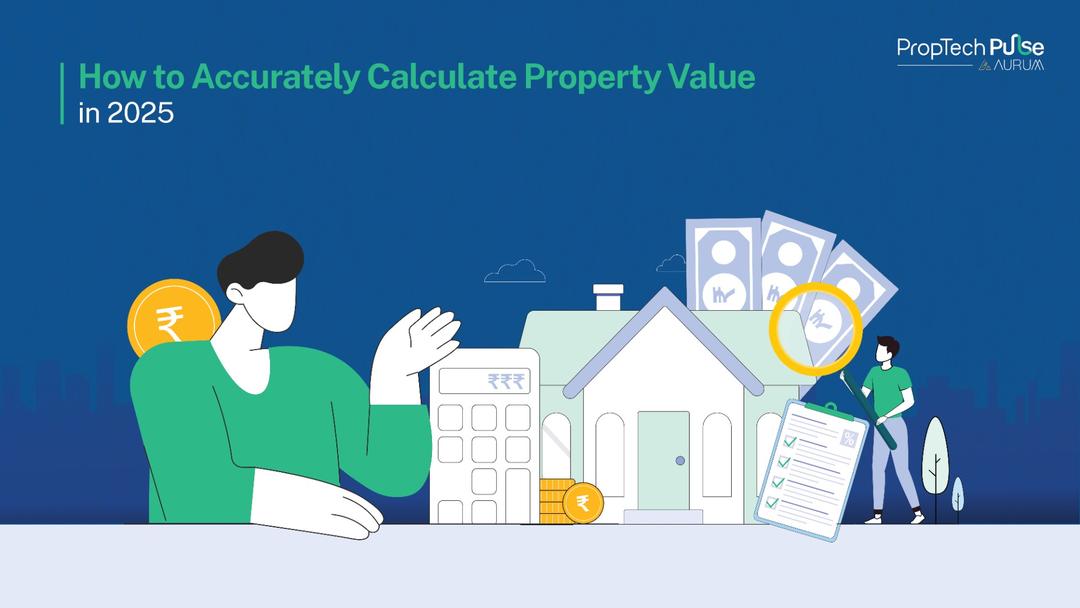Investment Opportunities
PropTech Pulse Editorial
18th August 2025
4 Min Read
PropTech Pulse Editorial
18th August 2025
4 Min Read

Why Real Estate Bonds Are Gaining Attention in India (2025)
As India’s real estate sector matures and diversifies, real estate bonds are emerging as a compelling fixed-income alternative for investors seeking stable returns, portfolio diversification, and exposure to the property market without direct ownership. Record bond issuances by developers, a surge in private credit funds, and regulatory reforms are fueling demand. With yields often higher than traditional FDs and corporate bonds, real estate bonds in India are attracting retail investors, HNIs, NRIs, and family offices who want to balance risk and reward in 2025.
2. What Are Real Estate Bonds?
Real estate bonds are debt instruments issued by developers, corporates, or municipalities to raise capital for property development, infrastructure, or refinancing. Investors lend money by buying these bonds and, in return, receive fixed or floating interest payments over a defined period, plus principal at maturity.
How they work:
- You invest a lump sum in a bond issued by a real estate entity.
- The issuer uses the funds for construction, land acquisition, or infrastructure.
- You receive regular interest (coupon) payments, typically semi-annually or annually.
- At maturity, you get your principal back.
Difference from traditional bonds:
While all bonds are debt instruments, real estate bonds are specifically backed by real estate assets, project receivables, or mortgage pools, offering investors a direct link to the property sector.
Examples in India:
- Prestige Projects, Kalpataru, and Purva Good Earth have all issued high-yield bonds for residential and commercial projects in 2024–25.
- Municipalities like Pune and Ahmedabad have raised funds via municipal bonds for smart city and infrastructure projects.
3. Types of Real Estate Bonds
Development Bonds – Issued by real estate developers for construction finance
Issued by real estate developers to fund construction, land acquisition, or refinance existing debt. These are often secured by project receivables or property assets.
Municipal Bonds – Issued for infrastructure projects (e.g., Smart Cities)
Issued by city corporations or urban local bodies to finance infrastructure—roads, water supply, smart city projects. Investors earn interest from municipal revenues.
Mortgage-Backed Securities (MBS)
Bonds backed by pools of mortgage loans. Investors receive payments from the underlying mortgage repayments.
Listed vs Unlisted Real Estate Bonds
Listed: Traded on exchanges, offering liquidity and price transparency.
Unlisted: Privately placed, often with higher yields but lower liquidity.
Public vs Private Placement Bonds
Public: Offered to retail investors via exchanges or platforms.
Private: Sold to select investors (HNIs, institutions) with higher minimum investment.
4. Real Estate Bonds vs. REITs vs. Direct Property Investment
| Feature | Real Estate Bonds | REITs | Direct Property |
|---|---|---|---|
| Entry Cost | ₹10,000–₹1 lakh+ | ₹300–₹10,000+ | ₹5 lakh–₹1 crore+ |
| Liquidity | Medium (if listed) | High (exchange traded) | Low |
| Income | Fixed interest | Dividends + appreciation | Rent + appreciation |
| Risk | Credit, market, liquidity | Market, tenant, asset value | Market, tenant, legal |
| Taxation | Interest taxed as income | Mixed (dividend, capital gain) | Rental, capital gain |
| Control | None | None | Full |
| Diversification | Project/issuer level | Portfolio level | Single asset |
5. Return on Investment: What Can You Expect?
Typical Interest Rates:
- Development/Corporate Bonds: 9–14% p.a. (2025 average: 10.5–12.5%)
- Municipal Bonds: 7–8.5% p.a.
- MBS: 8–10% p.a.
Global Comparison:
US/UK real estate bonds: 4–7% p.a. (lower risk, lower yield)
Indian bonds offer higher yields due to credit and market risk premium.
Case Study:
In 2024, a ₹1 crore bond by Prestige Projects offered 11% yield, paid semi-annually, with a 3-year maturity.
Pre-tax vs. Post-tax Yield:
Interest is taxed at your slab rate (see Tax section below).
Listed bonds held >12 months: LTCG at 12.5% (no indexation).
Unlisted: STCG at slab rate.
6. How to Invest in Real Estate Bonds in India
Step-by-Step Process:
- Research: Use platforms like Jiraaf, Wint Wealth, GoldenPi, BondsIndia for curated bond listings.
- Due Diligence: Check credit rating (CRISIL, ICRA), issuer reputation, collateral, and project details.
- KYC & Account Setup: Complete online KYC with PAN, Aadhaar, and bank details.
- Investment: Select bond, transfer funds, and receive bonds in your demat account.
- Monitoring: Use mobile apps or online dashboards for interest payments and maturity alerts.
Minimum Investment:
Ranges from ₹10,000 (public issues) to ₹10 lakh+ (private placements).
7. Tax Implications of Real Estate Bonds
Interest Income: Taxed as per your income slab for both residents and NRIs.
TDS: Deducted at source for interest paid to NRIs and residents.
Capital Gains:
- Listed bonds held >12 months: LTCG at 12.5% (plus cess), no indexation.
- Unlisted bonds: Gains always taxed as STCG at slab rate (as per Section 50AA from July 2024).
Comparison:
- REITs: Dividend income exempt; interest and capital gains taxed as per rules.
- Direct property: Rental income taxed as income; capital gains taxed at 20% (with indexation) for LTCG.
8. Risks Involved
- Credit Risk: Issuer default or project delays can impact interest/principal repayment.
- Liquidity Risk: Unlisted/private bonds may be hard to sell before maturity.
- Regulatory Risk: Changes in SEBI, RBI, or RERA norms may affect bond structure or returns.
- Market Risk: Rising interest rates can reduce bond prices and secondary market value.
How to Mitigate:
- Invest in rated bonds (preferably AA or higher).
- Diversify across issuers and bond types.
- Use SEBI-regulated platforms and review legal documentation.
9. Regulatory Framework
- SEBI: Regulates corporate bond issuance, listing, and investor protection.
- RBI: Regulates NBFCs, banks, and NRI investment in bonds.
- RERA: Ensures project transparency and accountability for developer-issued bonds.
- Debenture Trustees: Protect bondholder interests and enforce covenants.
10. Global Trends and Indian Context
Global: US and UK markets use MBS and real estate bonds for housing finance and infrastructure.
India: 2024–25 saw record bond sales (₹574bn+), driven by private credit funds and developer demand.
Key Players: Tata Capital, Indiabulls, Piramal, Prestige, Kalpataru, and new-age platforms like Jiraaf and Wint Wealth.
11. Ideal Use-Cases: Who Should Invest?
- Salaried Professionals: Seeking stable, higher-than-FD returns.
- HNIs & Family Offices: Diversifying beyond equity and direct real estate.
- NRIs: Looking for rupee-denominated, fixed-income assets.
- First-time Investors: Wanting exposure to real estate without large capital or management hassle.
12. Real Estate Bonds for NRIs
Eligibility: NRIs can invest in select listed and government bonds (e.g., NHAI, REC, PSU bonds) and some developer bonds via NRE/NRO accounts.
FEMA Guidelines: Investment and repatriation subject to RBI and FEMA rules.
Tax: Interest income taxable in India; TDS applies. DTAA may help avoid double taxation.
Platforms: Many online bond platforms now cater to NRIs with digital onboarding.
13. Real Estate Bonds in 2025: Market Outlook
Trends: Surge in bond issuance, especially for greenfield residential projects and infra.
Returns: Expected to remain in the 9–12% range for development bonds, 7–8.5% for municipal.
Government Push: Smart Cities, infra projects, and housing for all are driving demand for bond financing.
Interest Rate Impact: Falling rates can boost bond prices; rising rates may reduce secondary market value.
14. Tools and Resources for Investors
- Bond Calculators: Assess yield, maturity, and risk (see Jiraaf, GoldenPi, Axcess Surety).
- Rating Agencies: CRISIL, ICRA, CARE for bond ratings.
- Investment Platforms: Jiraaf, Wint Wealth, GoldenPi, BondsIndia.
- Mobile Apps: For monitoring, alerts, and portfolio management.
15. Conclusion
Real estate bonds in India are fast becoming a preferred route for investors seeking stable returns, diversification, and lower entry barriers compared to direct property investment. While they offer attractive yields and a fixed-income profile, investors must weigh credit, liquidity, and regulatory risks. With the right due diligence, use of SEBI-regulated platforms, and diversified exposure, real estate bonds can be a smart addition to your 2025 investment portfolio—especially for those seeking alternatives to traditional FDs, REITs, or direct property.
Unlock the Latest in Real Estate
News, Infographics, Blogs & More! Delivered to your inbox.
“Data that drives action. Insight that inspires action. Technology that empowers action.“
“Data that drives action.
Insight that inspires action.
Technology that empowers action.“









